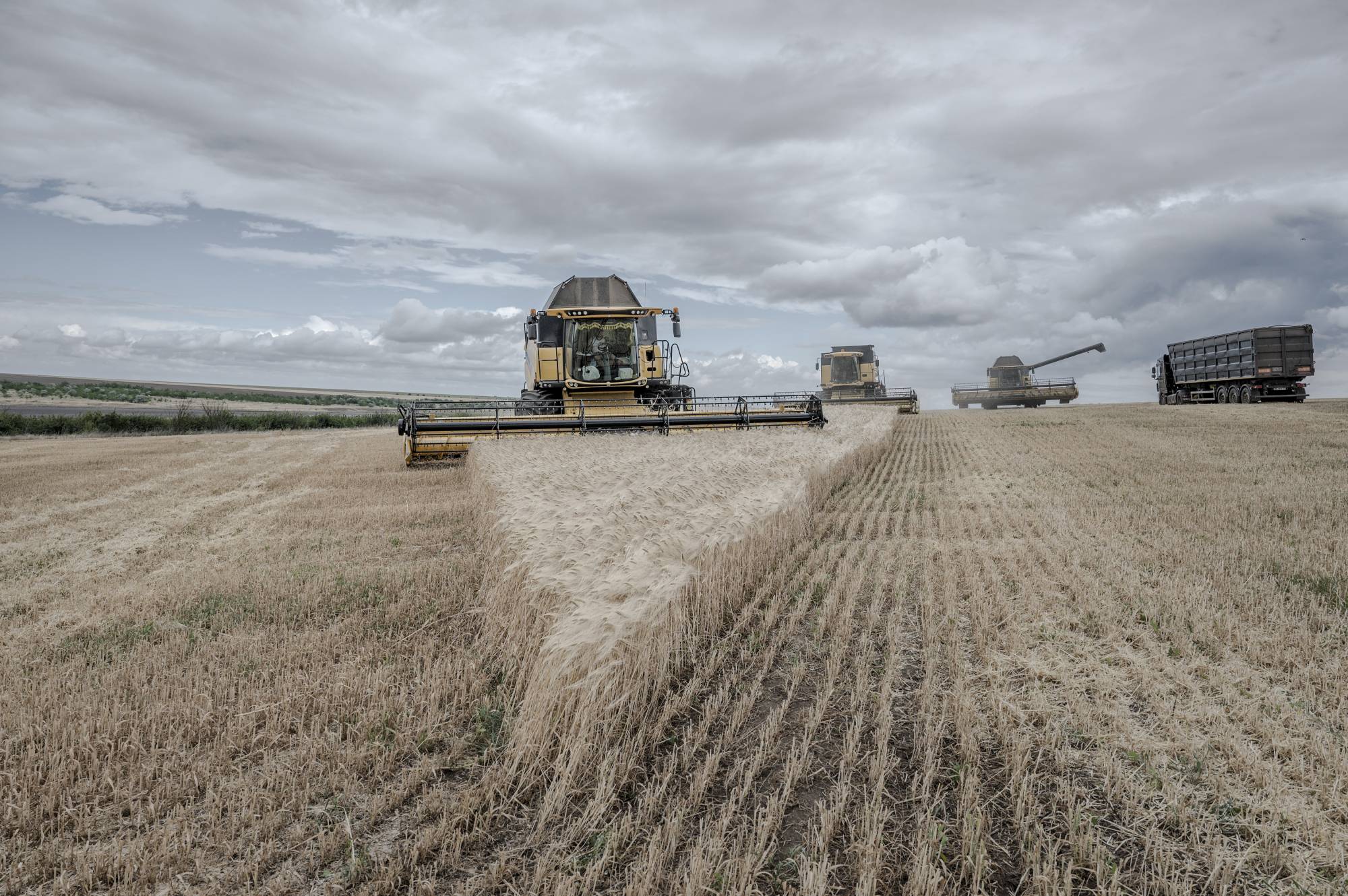[ad_1]
Working outside at a community vegetable garden in suburban Tokyo on a sunny Saturday morning in early autumn, Ikuko Fujishiro is in her element. People of all ages are engaged in various tasks, but the vibe is decidedly relaxed and there is plenty of chatting mixed in with the work.
With time on her hands after pivoting to working from home because of the pandemic, Fujishiro accepted a friend’s invitation to help harvest potatoes last June. Grateful for the chance to take a break from her laptop, she has been visiting the shared plot in her neighborhood once or twice a week ever since.
“So far, I’ve experienced tilling the field, planting seeds, weeding, and harvesting rice and vegetables — all of which were new to me,” Fujishiro says with a smile. “I’ve lived in Tokyo, Kobe, London and Shanghai, but I’ve never had the opportunity to do any farming before. I feel relaxed and fulfilled when spending time in the garden.”
New Zealander Jon Walsh, a Tokyo-based urban farming consultant and founder of Business Grow, points out that the COVID crisis has helped raise awareness of the value of food and community.
“Since the pandemic began, demand for community garden plots in my part of Tokyo has jumped to the point where I missed out on winning one for the first time in nearly a decade,” Walsh says.

Land use
Many cities and towns offer plots of land for use by local residents for a nominal fee, often under the category of shimin nōen, or “citizens’ farms.” The application period to rent a community garden plot is usually in the first half of January. Application details are published in local newspapers or newsletters, available at city halls, libraries, train stations and other public facilities.
Typically, plot “winners” are notified in February and gardens open in mid-March. In Tokyo, the plot size is likely to be approximately 3-by-5 square meters. In most cases, community garden users must supply almost everything themselves, but can share large tools from the garden tool shed with fellow plot holders — fine for someone who knows what they’re doing; perhaps a little more intimidating for a novice.
Agriculture support business Agrimedia Inc. offers a more structured kind of community gardening experience at its approximately 110 Share Batake (“Shared Fields”) locations in Kanto and Kansai. Tools, seeds and fertilizers are all included in the plot fee, and experienced gardening advisers are on hand to help. According to Agrimedia spokesman Masahiro Ohta, interest in Share Batake has boomed since the start of the pandemic, with some 70% of users being complete beginners at vegetable growing.
Share Batake also seeks to address the problem of pockets of unused agricultural land in urban areas.
“By making effective use of idle farmland, we believe this model can be a win-win situation — both for those who wanted to grow vegetables but were unable to do so, and for people who had vacant land and needed help managing it,” Ohta says.
Amid issues like the climate crisis and shifts in the global food supply, Walsh predicts that community gardens will play an increasingly valuable role in society.
“They’re a microcosm of what food production can be, should be and likely will be in the very near future,” he says, adding that community gardens are a tangible way for food-growing skills to be passed on to the younger generation.
“Long-term food supply is a crucial issue, especially considering Japan’s food self-sufficiency rate in fiscal 2020 dropped to 37% — its lowest level since record-taking began in 1965. Ordinary people will increasingly have to take responsibility for at least part of their food supply, and urban farming utilizing community gardens is an important way this will happen,” Walsh says.

Growing together
With many international residents unable to travel to their home countries, community gardens can also be an opportunity to form new connections.
“Starting a conversation doesn’t get much easier than when you hand over fresh food to another gardener or neighbor,” Walsh says. “I have often given my excess food away to other urban farmers and been handed far more in return. When you grow your own vegetables, especially larger climbing plants like tomatoes and cucumbers, your fresh food bills can take a dive. Try ¥1 per tomato!”
Following a decision to practice a more environmentally conscious way of eating, Joanna Arai got involved in urban farming several years ago. Originally from Poland, she now raises vegetables on a shared plot in downtown Tokyo.
“It’s very rewarding and fun to be able to witness life unfold in all its stages and then provide my body with amazing flavors and nutrition,” she says.
At the other end of the country, Canadian Jodi Lindsay shares garden space and produce with her friends and neighbors in Shikoku. In the wake of the uncertainty caused by the pandemic, she feels it is more important than ever to pool resources with those who have similar values.
“Other than the obvious health and economic benefits of producing our own food, our children are also exposed to a variety of people and knowledge that will prepare them for their own futures,” Lindsay says.
Concerns over health, lifestyles and livelihoods due to the pandemic have also led to increased stress levels. TELL Outreach Coordinator Selena Hoy points out that it is more important than ever to do things that nurture the soul.
“Community gardening is a great pastime in this respect and it ticks so many boxes — having a change of scenery, getting out into the fresh air and nature, moving your body and exercising, doing something creative and making social connections — all in a relatively COVID-19-safe outdoor environment,” she says.
So if you’re ready to try something more expansive than a balcony migrogarden, reach out to your local gardening community and get growing.
For more information about Jon Walsh’s urban agriculture consultation services, visit bit.ly/urbanfarming-jp. Prices for Share Batake plots vary by region. For more information, and to check for available gardens near you, visit sharebatake.com (Japanese only).
A few tips for gardening in autumn:
While spring might seem like the best time for gardening, Jon Walsh says autumn is a wonderful time for urban farming in Japan. Here’s a few of his tips for how to get the most out of planting this season:
• In warmer areas of Japan, the autumn-winter growing season is likely to run from mid-September through mid-November, upon which plant growth will slow to a virtual halt. If you are growing anything at home, you may need to clean up debris and weeds before you start planting outside, as well as refresh the soil in your planting containers to maintain those all-important soil nutrients for both indoor and outdoor plants.
• To find out which plants can be grown in autumn, visit your local plant shop or home store and see what varieties they have available. Options might include broccoli, mizuna greens, chingensai (bok choy) and herbs. Walsh advises growing a combination of seedlings and seeds — produce from the seedlings will be ready to eat first, with the seeds not far behind them. If you want to get food on plates fast, sow baby leaf seeds. These come in a range of different mixes and, with good sun exposure, should be ready to pick in 12 to 16 days.
• Growing vegetables isn’t rocket science, so don’t be afraid to seek advice and learn the basics. The key is to sow seeds at the right depth, grow most of your plants in places that receive maximum sunlight and water regularly. Almost anywhere a flower, shrub or tree is currently growing will be a good location — simply switch the plant for an herb or vegetable and add general-purpose soil suitable for a wide variety of plant types.
In a time of both misinformation and too much information, quality journalism is more crucial than ever.
By subscribing, you can help us get the story right.
SUBSCRIBE NOW
[ad_2]
Source link






















